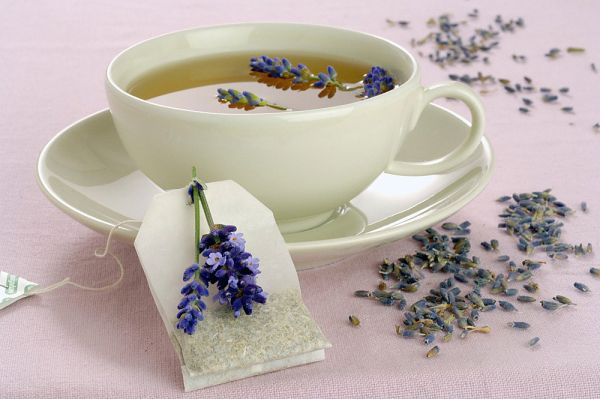Appreciated for ages, tea is the second most consumed beverage in the world after water. Tea is very low in calories. It contains a host of active ingredients, including antioxidants, that have attracted the attention of scientists. There are many varieties of teas and different processing methods (fermented, semi-fermented, smoked teas, etc.). This leaflet will focus on green tea, which is an unfermented tea, and black tea, whose leaves have undergone several processes.
Tea Active Ingredients
1. Antioxidant
Antioxidants are compounds that protect the body’s cells from damage caused by free radicals. The latter are very reactive molecules that would be involved in the development of cardiovascular diseases, certain cancers, and other diseases related to aging. Tea contains several polyphenols, a vast family of antioxidants whose main three are catechins, theaflavins, and thearubigines. The polyphenol content of tea may vary according to several factors such as climate, season, tea variety, freshness, and infusion time. In general, green tea would have greater antioxidant activity than black tea. According to a review of the scientific literature, in humans, the consumption of 300 ml or more of green tea causes a significant increase in the antioxidant activity of the blood in the following hours.
2. Catechins
Catechins are the antioxidants of tea which are the subject of the greatest number of studies. Green tea is the one that contains the most. The black tea also contains them, but the processes which it undergoes transform a part of the catechins into theaflavins and thearubigines. Moreover, the addition of milk to black tea would diminish somewhat the absorption of catechins. But this would not necessarily hinder the overall antioxidant activity of this tea in the body, researchers say.
Other polyphenols: Whether green or black, tea is also considered a source of other polyphenols such as quercetin and kaempferol. These tea compounds, belonging to the family of flavonols, would also have beneficial effects on the prevention of cardiovascular diseases and cancer.

Tea Benefits
Infuse your tea to get the most benefit
The temperature and infusion time influence the antioxidant content of the tea being drunk. For best results, green tea or leaf tea is infused for at least 2 minutes at 90°C. The longer the green tea infused, the greater its antioxidant power. This is at least what emerges from a study whose objective was to measure the antioxidant power of teas prepared according to the most commonly used methods. The author of the study also mentions that it is preferable to drink black tea without milk since this tea, especially when it is not skimmed, decreases the antioxidant power of tea. Green tea contains about twice as many antioxidants as black tea. The main catechin of green tea is called EGCG (epigallocatechin gallate). EGCG considered one of the major contributing substances to the health benefits of tea. Japanese green teas would contain more than Chinese green teas.
Tea benefits for cardiovascular illnesses
According to data from reviews of scientific literature and human studies, tea, or some of its compounds, would be beneficial to cardiovascular health. Among these compounds are the antioxidants which would possibly play an important role. Observational studies have suggested that high consumption of flavonols, in some cases mainly tea, as well as high consumption of catechins from tea and other sources, associated with a risk Lower deaths from cardiovascular disease. It has also been argued that tea could help lower blood lipid levels in animals. In humans, the data remain contradictory on this subject. Overall, despite all available scientific evidence, unambiguous clinical trial results published in order to better assess the potential health benefits of tea on cardiovascular health.
Cancer prevention
In vitro studies in animals and some observational studies in humans suggest that green tea has beneficial properties for cancer prevention. The EGCG would be one of the main substances in green tea to participate in this preventive effect. In 2004, an application filed with the Food and Drug Administration (FDA) to allow this agency, which involved in US food control, to accept a claim on food labels. This allegation involved a link between the daily consumption of green tea and a reduction in the risk of certain cancers. Following a rigorous analysis of the scientific literature, the FDA concluded that there are not yet enough well-controlled studies to confirm such a link in humans. More research needs, done to this end.
Dental health
Scientific literature indicates that tea, whether green or black, may help to reduce tooth decay. In the case of green tea, it is its polyphenols that would limit the growth of bacteria associated with caries such as E. Coli, S. Salivarius, and S. mutans. In addition, green tea and black tea have the ability to decrease the activity of salivary amylase, an enzyme that degrades food starch into simple sugars, which would also contribute to anticarcinogenic action.
- Bodyweight
In humans, a few clinical studies shown that tea catechins can cause a slight decrease in body weight and the percentage of fat. This effect explained in particular by an increase in metabolism. However, most of these studies involved purified green tea extracts. Moreover, these studies did not examine the long-term effect of such consumption, and few were strictly controlled. While awaiting more studies on the subject, vigilance is still necessary for the interpretation of these results.
Neuroprotection
An observational study in humans focused on the potential link between tea and cognitive functions in the elderly. The researchers found that people who consumed two or more cups of green tea per day had a significantly lower risk of cognitive deterioration (e.g, orientation over time and space, attention, memory). However, this relationship was not significant in the case of green tea and black tea. EGCG, the main antioxidant catechin of green tea, is one of the compounds that can explain the beneficial effects observed on cognitive function. Other reviews in the scientific literature suggest that green tea polyphenols may help protect the brain against certain degenerative diseases such as Alzheimer’s and Parkinson’s disease. Research is still in its infancy. Further studies needed to deepen knowledge in this area.
Bone health
Observational studies in elderly women indicate an association between regular consumption of tea and better bone density. Assumptions made to explain these findings, including the fluoride and flavonoid content of tea that could affect bone health. However, further studies in humans conducted to consolidate these preliminary results.

Precautions
Caffeine
Tea caffeine called “theine”. Its quantity may depend on the variety of tea and methods of processing and preparation. For example, green tea would contain less caffeine than black tea. Appreciated for its stimulating effect, caffeine can also cause adverse effects such as irritability, nervousness, insomnia, diuretic effect, impaired heart rhythm, and gastrointestinal disorders. Experts consider that caffeine consumption exceeding 500mg to 600mg per day is abusive. Such consumption can constitute a health risk, in particular for bones and the cardiovascular system. In women of childbearing age, recommended not to exceed 300mg per day.


